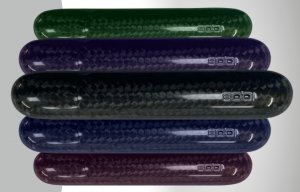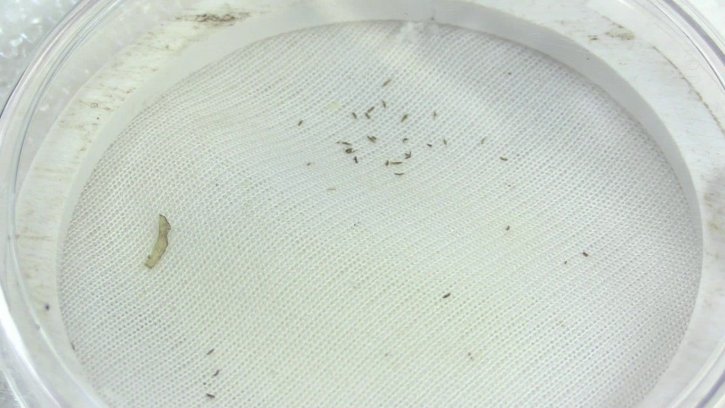
Coloured carbon covers for IQOS devices
3D crop cover knitted using clear yarns proves highly effective at providing protection from insects.

26th April 2022
Innovation in Textiles
|
North Carolina, USA
Plant Armor, developed at North Carolina State University, could provide a more effective, chemical-free alternative to plant protection by forcing insects to navigate a maze-like path as they try to reach a plant.
Previously, plant covers have been designed to exclude insects based on size alone, which is insufficient for keeping out insects as small as tobacco thrips, which are about the size of a pencil point.
“To exclude insects that are really small using traditional textile cover designs, the size of the openings would have to be so small that it would also prevent water, air and moisture from penetrating,” said the study’s senior researcher Mike Roe, professor of entomology at NC State. “We had to come up with another way of excluding the insects other than just based on pore size.”
The researchers designed a three-layer knitted fabric using clear yarns in the outermost and innermost layers. The yarn, which can be made from recycled plastic, still allows sunlight to pass through, but restricts insects from reaching plants. A knitted inner layer is sandwiched perpendicular to the two surrounding layers, creating a maze-like structure.
“With our design, the insect has to figure out how to get through the maze to get to the plant on the other side,” Roe said. “The tortuosity makes it more challenging to get through. The insect has a certain amount of time to find food or it will die. That time is relatively fast for a young insect.”
In the first of three experiments, researchers found it took significantly longer for insects to penetrate the Plant Armor. They placed a cabbage leaf and 10 tobacco thrips inside a Petri dish, separated by the Plant Armor or another crop cover. It took approximately three hours for five of the thrips to make it through the Plant Armor, while it took only 12 minutes for them to cross a commercially available, single-layer crop cover. In the same experiment with young, unfed caterpillars, Plant Armor was nearly 90% effective at preventing them from crossing in 12 hours.
“In real life, the insect has a lot of other choices of where to go to find food – this was a worst-case scenario where they had only one place to go,” Roe said. “So we expect in the natural environment, the protection is going to be much greater.”
When researchers tested how well they could protect potted cabbage plants inside a cage with unfed caterpillars, uncovered plants were infested and almost completely eaten, while plants covered and sealed with Plant Armor were not. They did not find a single caterpillar on the covered plants after 10 days.
The last experiment was a three-month, outdoor field trial testing how well Plant Armor worked when used like a greenhouse cover. The researchers found plants covered with Plant Armor were larger on average and the weight of cabbages under the textile was almost three times larger than the control.
“Thrips are extremely tiny,” said the study’s first author Grayson Cave, a doctoral candidate at NC State. “If we could keep them out, we think we have a good chance of keeping other, larger insects out. And as for the neonate caterpillars – they have to feed immediately, and they’re the tiniest stage of caterpillars. This gives us some good, preliminary data that this would work towards being protective against other caterpillars too.”
“Part of what we’re doing is finding new, smart textiles,” said study co-author Andre West, associate professor of textile, apparel and technology management at NC State and director of Zeis Textiles Extension. “We think this design could help farmers in extreme environments or where crop production is limited in certain areas. It could also be an alternative for organic farmers. Not only is the product itself made with some recycled materials, but it could also be recycled again.”
The study, Novel 3-D Spacer Textiles to Protect Crops from Insect-Infestation and that Enhance Plant Growth was published online in the journal Agriculture.
Vector Textiles holds an exclusive license for a patent connected to the Plant Armor technology. McCord, Roe, and West are inventors on the patent related to the technology owned by NC State, and would share in revenues derived from its commercialisation.

Business intelligence for the fibre, textiles and apparel industries: technologies, innovations, markets, investments, trade policy, sourcing, strategy...
Find out more